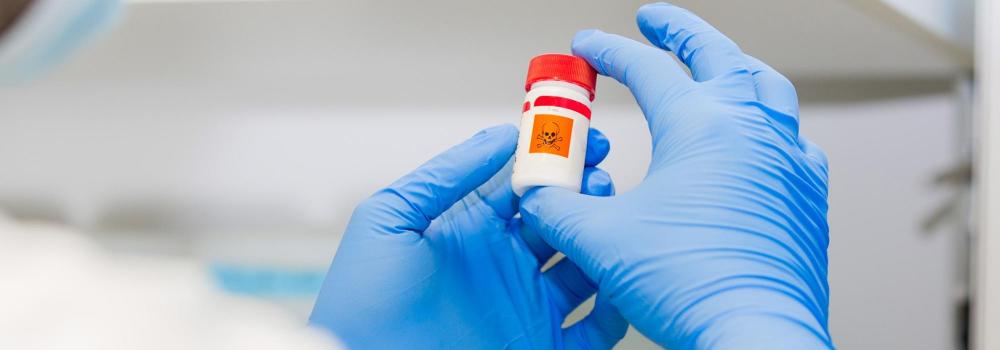It is estimated that more than 8 million U.S. healthcare workers are exposed to hazardous drugs in the workplace each year. To help mitigate this risk, the United States Pharmacopeia rolled out USP Standard <800> in 2019, aimed to regulate employee protection.
This article will help facilities understand the technology and resources necessary to comply with USP <800> guidelines and offer solutions on how to reach compliance quickly and efficiently.
For more details about how Primex solutions can help your facility with USP <800>, contact us today. For details on other USP guidelines, read our blog on USP <795> and blog on USP <797>.
USP <800> Summary
USP <800> standards aim to help facilities properly handle hazardous drugs in order to promote patient safety, employee safety, and environmental protection. According to the USP, this includes the “receipt, storage, compounding, dispensing, administration, and disposal of sterile and nonsterile products and preparations.” Because many hazardous drugs are found in hospital facilities, nurses, physicians, and other healthcare staff are often at risk of exposure. Following USP < 800> guidelines will ensure that facilities properly store and dispose of these materials to enhance the health and safety of employees.
n order to comply with the guidelines, USP outlines the requirements facilities will need to meet, which include but are not limited to:
- Inventory of hazardous drugs
- How responsible parties will handle hazardous drugs
- Facility and engineering controls
- Environmental and quality controls
- Proper use of appropriate Personal Protective Equipment (PPE)
- Proper hazardous waste disposal and storage
- Personnel Training
- Receiving
- Labeling, packaging, transport and disposal
- Dispensing final dosage forms
- Compounding
- Administering
- Deactivating, decontaminating, cleaning and disinfecting
- Spill control
- Documentation and standard operating procedures
- Medical Surveillance for employees handling hazardous drugs
Below we will explore the best practices facilities should implement to maintain compliance with USP <800>.
Foundations for Compliance
It could have been likely that your facility faced challenges during the rollout of these requirements within USP <800> guidelines, which is why it is important to reassess your efforts to ensure nothing slipped through the cracks.
Bringing Key Stakeholders on Board
First, facilities should look to implement an interdisciplinary team that includes pharmacy staff, nurses, administration, and quality control employees. Facility managers should start by creating a list of all hazardous drugs housed in the facility. As new or different drugs enter the facility walls, administrators will need to evaluate hazards utilization forms to assess risk. Because the USP requirements are extensive, it will be helpful to train staff and rely on your interdisciplinary team to help handle these hazardous drugs and the tasks that come with it.
Hazardous Drug Storage
A key component in complying with USP <800> is proper drug storage, receiving, and transport. To prevent spills and exposure, hazardous drugs should be stored in well ventilated, negative-pressure rooms. Facilities should also ensure the proper labeling, storage, and handling of these drugs in compliance with state and federal regulations.
The OneVue Sense™ Temperature and Differential Pressure monitoring solutions, combined with the cloud-based OneVue® software platform, can ensure your facility is in compliance with regulations and protect your inventory. The OneVue solution eliminates the use of manual data logging, enabling you to capture and document vital monitoring data without placing a strain on caregivers’ bandwidth.
Compounding & Proper Ventilation
Part of the USP <800> guidelines help to protect hazardous drugs from cross-contamination and microbial contamination during the compounding process. Facilities must implement containment primary engineering controls (C-PECs), including:
- Externally vented
- Physically separated
- Have appropriate air exchange
- Have a negative pressure between 0.01 and 0.03 inches of water column relative to all adjacent areas
Facilities will need to monitor air flow quickly. The aforementioned Primex OneVue Sense Differential Pressure and Temperature and Humidity monitoring solutions can help monitor key parameters in hospital negative pressure rooms, alerting you to any changes.
Primex OneVue Provides the Tools You Need for Compliance
Primex OneVue Sense Differential Pressure monitoring solutions are easy to install and provide you with the assurance that your facilities are maintaining negative pressure to prevent containments from spreading. You can remain at ease knowing that the solution will alert you to any pressure changes, keeping you in compliance 24/7. The OneVue system provides you with the ability to continuously track and document pressure differentials, reducing headaches.
The Primex OneVue solution allows for on-demand reports, customized alerts, and top-notch security. You can rest easy knowing your facility has all your documents and reports in one place, allowing you to show you’re in compliance with regulations. The system also logs data and alerts you to any conditions that may warrant attention. Automated tracking allows facilities to focus on improvement and providing the best care possible to patients.
